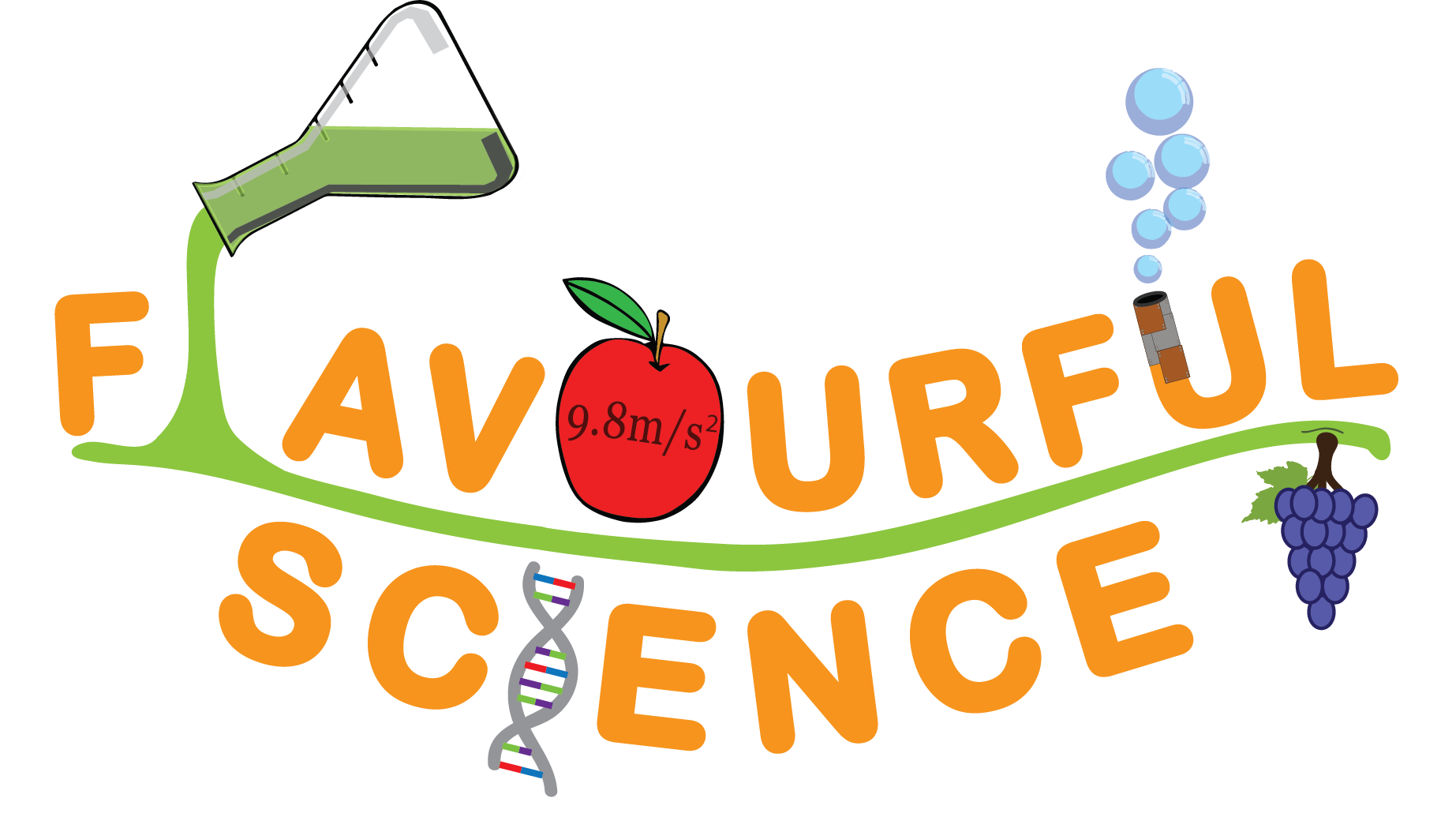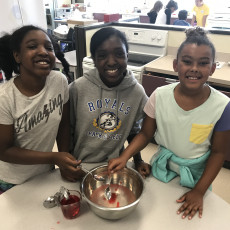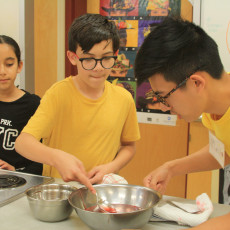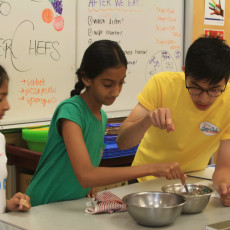Materials:
- ½ Teaspoon sodium alginate
- 1 Teaspoon Calcium Lactate
- 4 Cups of cold water
- 2 Bowls
- Water flavouring syrup (eg. Mio)
Procedure:
- Put 1 cup of water in a bowl and add ½ teaspoon sodium alginate
- Using any kind of blender (eg. hand blender, blender, etc.), blend the sodium alginate
- Combine 1 teaspoon of calcium lactate and 4 cups of water in a separate bowl.
- Using a spoon or ladle to transfer some of the flavoured sodium alginate solution into the calcium lactate solution.
- Remove product from solution using slotted spoon.
- Taste your edible water bottles, which are now filled with juice!
Lesson Outline:
Here we are going to be looking at how to make edible juice pockets! Nowadays, food and science is combining to try to reduce the amount of plastic, which is ending up in landfills and the oceans. Scientists have calculated that currently, over 7.8 Billion metric tons of plastics have been produced, which is about 2 billion African elephants or about 60,000 Toronto CN towers [1]. Recently, an important science-food initiative includes replacing single-use tableware items made from plastics. One of many interesting methods that are gaining momentum includes single-use edible tableware items made from an extract of seaweed!
In this lesson, we are going to be exploring molecular gastronomy through environmentally friendly edible juice pockets! Molecular gastronomy is just a field of food-related science focussing on how chemical and physical processes can be used for preparing food. We will be using a seaweed extract called sodium alginate and like many of the food groups that we eat, is a polymer. But what is a polymer?
In order to understand what a polymer is, we must first take a look at what a molecule is! A molecule is defined as a group of atoms bonded together through some sort of chemical interaction between the atoms. The atoms bonded together may be the same type (eg. hydrogen gas – H2) or could be different atoms (eg. water – H2O); it does not matter. As long as there is more than 1 atom bonded together, it is a molecule.
Now that we know what molecules are, let’s take a look at what exactly a polymer is. Polymers are very large molecules where smaller molecules are repeatedly connected to themselves. This chain of the small molecules can become very long: an example includes carbohydrates, where glucose is connected to itself a number of times: (glucose)n – (“n” just represents a certain number of times it is connected to itself). Polymers regularly consist of organic materials including carbon, nitrogen, oxygen and hydrogen. Examples of polymers can be found everywhere we look: such as carbohydrates and fibre in our food, as well as plastic and rubber.
Carbohydrates are polymers that are a major source of energy for the human body because the human body has enzymes that break down carbohydrates and harvests the energy from them, but if you have too many carbohydrates, the carbohydrates are broken down and stored in your body as fat!
Fibre that is in your fruits and vegetables is also a polymer. This polymer, on the other hand, cannot be fully broken down by the body. However, it can be broken down to be small enough to go through your digestive system without any problems at a healthy speed. Therefore, it is useful for making sure that other foods go through our body at a healthy speed (just like a pipe cleaner!).
Another example of polymers are plastics and rubbers! These are polymers where the small molecules are strongly linked together and cannot be easily broken apart by neither physical process, nor organisms. Because of how tightly these smaller molecules are bonded together, they do not break down over time. These polymers are not digestible by the body because our body is not able to break it down into a form small enough to safely pass through the digestive system. Therefore, they cannot be ingested. Additionally, they are not biodegradable as the bonds between all the little molecules are very strong and do not break easily with time.
Now, like plastics and rubber, metals are also solids that don’t break down and are malleable (meaning they are able to be molded). Despite these features, they are not considered polymers. This is because metals have different types of interactions between their atoms than true polymers, where there are no molecules repeated to form a long chain.
Sodium alginate, a polymer that we will be using to make juice pockets that is extracted from seaweed, is a type of fibre! It is healthy to eat because it makes the food in your body move through at a healthy speed just like any other fiber. Because sodium alginate, unlike plastics, does not have extremely strong bonds is a fiber that can be broken down by organisms, it is biodegradable!
Let’s take a look at how exactly sodium alginate can be used to make an edible storage container. When you place a sodium alginate solution near calcium, the calcium binds to both alginate molecules and sort of acts as the glue that sticks the long chains of sodium alginate together. If multiple sodium alginate polymers are stuck together side-by-side, this makes a sheet of molecules. This sheet of calcium and alginate is jellowy and edible, capable of trapping liquids if made into a sphere!
In this activity, we will be making little spheres that contain juice in them. This molecular gastronomy activity is called spherification. These edible juice pockets are very healthy because calcium is an electrolyte that is good for your bones and the sodium alginate is fibre!
To make these edible juice pockets, we’re going to have two solutions. First, a sodium alginate solution that is made by blending sodium alginate powder into water. Second, a calcium lactate solution made by mixing calcium lactate powder into water. When we talk about “solutions”, all we are talking about are two things being mixed together. With these two solutions, we are ready to give it a shot!
Hannah Ritchie and Max Roser (2019) – “Plastic Pollution”. Published online at OurWorldInData.org. Retrieved from: ‘https://ourworldindata.org/plastic-pollution’ [Online Resource]



